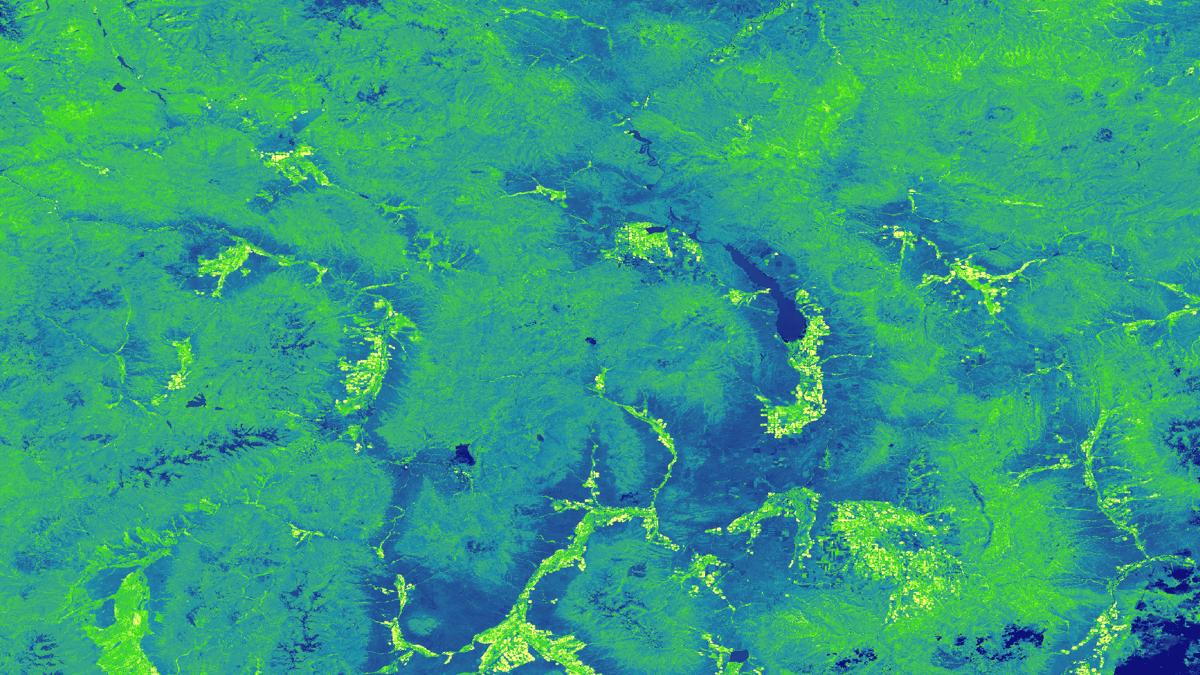
NASA

NASA
Tasseled cap greenness transformation derived from Landsat 8 imagery over lodgepole pine forest in the Intermountain West study area
Completed Projects
Madison Murphy
The urban heat island (UHI) effect occurs when non-vegetated surfaces trap heat during daylight hours, increasing the overall temperature of urbanized cities relative to adjacent rural areas. Excessive heat can increase the likelihood of heat stroke or dehydration, especially in vulnerable populations without access to...
Benjamin Rocha
The U.S. Army Corps of Engineers (USACE) and National Oceanic and Atmospheric Administration (NOAA) National Marine Fisheries Service (NMFS) will be supervising a harbor deepening project in Port Everglades, Florida. The project raises concerns about potential impacts on the nearby...
Logan Kline
Winter cover crops increase the sustainability of agricultural lands and the health of surrounding watersheds through erosion control and nutrient retention. The Maryland Department of Agriculture (MDA) incentivizes the planting of winter cover crops in the Chesapeake Bay area via a cost-sharing program that offers...
Tyler Pantle
Native plant species in the Colorado River Basin are currently threatened by non-native species that are changing resource competition dynamics. Monitoring native species is essential for understanding changes in plant health throughout the year as well as how species’ distributions...
Alexandra Jones
The California grunion (Leuresthes tenuis) is a species of fish endemic to the California coastline that plays an important role in the marine food chain as a consumer of zooplankton and a food source for larger marine creatures. Grunion spawning events, commonly referred to as...
Madison Bradley
Human-wildlife conflict is increasingly more common due to human population growth, habitat fragmentation, and changing climatic conditions. This conflict is particularly evident in the Kavango-Zambezi area, where over three million people share the landscape with an abundant megafauna population. As...
Madison Bradley
In the Kavango-Zambezi area of southern Africa, three million people live within areas frequently traveled by free-ranging elephants. As the region continues to develop rapidly, urban and agricultural settlements further encroach upon the land that these elephants use. As elephants come...
Amiya Kalra
In the Puget Sound region of Washington, high levels of air pollutants put residents’ health at risk by increasing their likelihood of developing critical respiratory conditions. This project used remotely-sensed data to investigate aerosol optical depth (AOD) from NASA satellite...
Nicole Holstein
The combined effects of increasing urbanization and climate change have exacerbated the urban heat island (UHI) effect and heat-related risks for city dwellers. Vulnerability to heat-related illnesses is further compounded by risk factors such as demographics, socioeconomic status, and pre-existing...
Nicole Ramberg-Pihl
The urban heat island (UHI) effect occurs when urban areas have temperatures that are warmer on average than the surrounding suburban and rural regions. Low albedo surfaces traditionally found in urban landscapes, such as dark asphalt and rooftops, absorb solar irradiance...